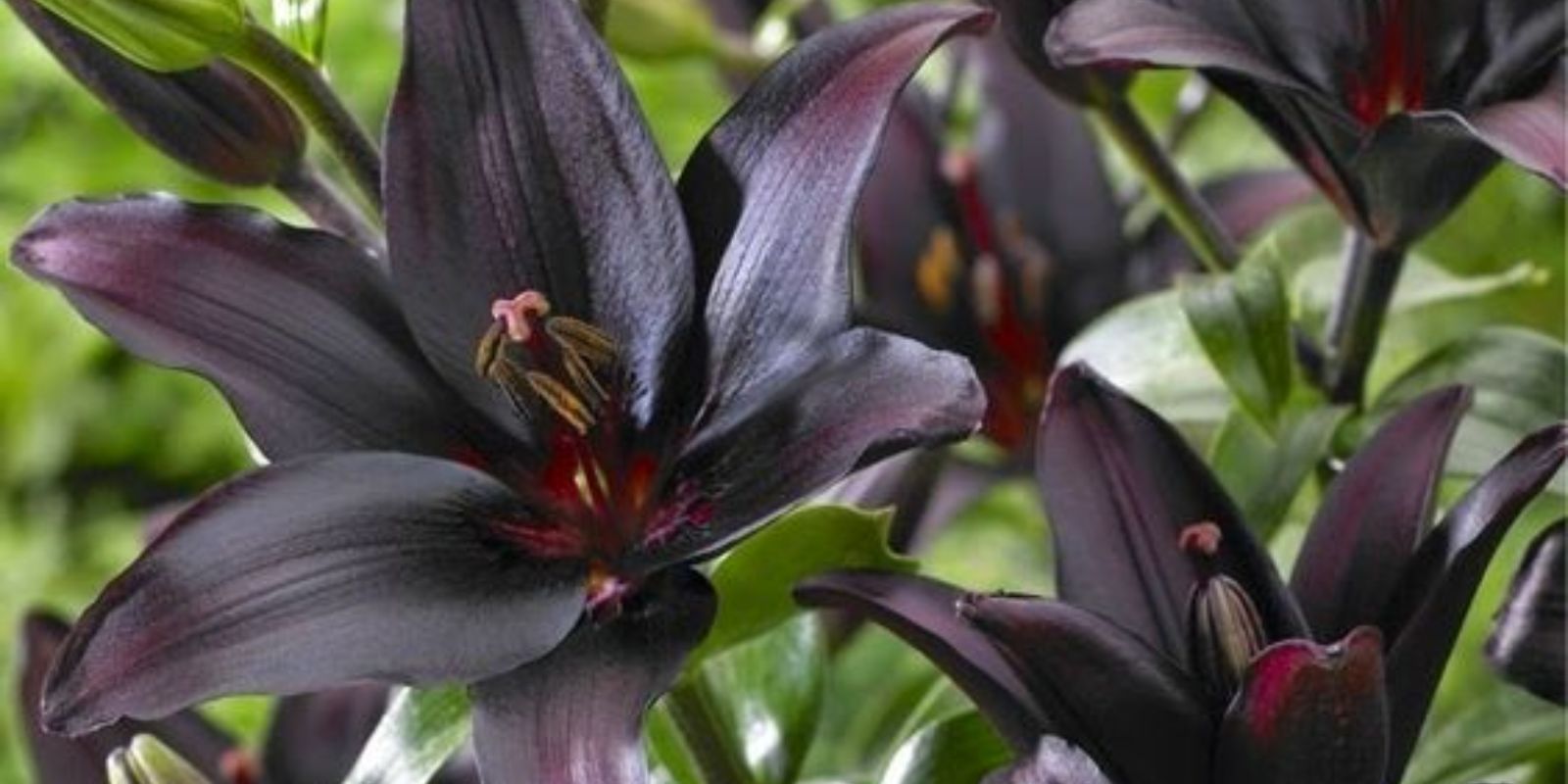Introduction
The Black Beauty Lily (Lilium ‘Black Beauty’) is a horticultural gem renowned for its dramatic and exotic appearance. Its dark, velvety flowers and elegant stature make it a standout choice for gardeners seeking to infuse their landscapes with a touch of sophistication and mystery. This article provides a detailed guide to growing and caring for Black Beauty Lilies, ensuring that you can enjoy their striking blooms year after year.
Understanding Black Beauty Lily
Botanical Characteristics
The Black Beauty Lily is a member of the Lilium genus, known for its impressive flowers and upright growth. This cultivar is particularly notable for its deep, dark purple to almost black petals, which create a striking contrast against its green foliage. The flowers are typically trumpet-shaped and can reach up to 6 inches in diameter, making them a focal point in any garden.
Blooming Period
Black Beauty Lilies generally bloom in mid to late summer. The flowering period can last several weeks, with each stem producing multiple flowers. This extended blooming period provides an opportunity to enjoy their beauty for a significant portion of the growing season.
Selecting the Right Location
Sunlight Requirements
Black Beauty Lilies thrive in full sun to partial shade. A location that receives at least 6 hours of direct sunlight each day is ideal for optimal growth and blooming. However, in hotter climates, some afternoon shade can help prevent the flowers from scorching.
Soil Conditions
These lilies prefer well-draining soil with a slightly acidic to neutral pH (6.0 to 7.0). Heavy or clay soils can lead to bulb rot, so it is crucial to prepare the soil to ensure good drainage. Incorporating organic matter, such as compost or aged manure, can improve soil structure and fertility.
Planting Black Beauty Lilies
Choosing Bulbs
Select healthy, firm bulbs without any signs of mold or damage. Larger bulbs generally produce stronger plants and more impressive blooms. Purchase bulbs from reputable sources to ensure high quality and disease-free specimens.
Planting Depth and Spacing
Plant Black Beauty Lily bulbs in the fall, about 6-8 inches deep. Space the bulbs 6-12 inches apart to allow for their mature size and to ensure good air circulation. Planting in a group can create a more dramatic visual impact.
Soil Preparation
Before planting, prepare the soil by mixing in organic matter and ensuring good drainage. If your soil is heavy, consider planting the bulbs in raised beds or containers to avoid waterlogged conditions.
Caring for Black Beauty Lilies
Watering
Consistent moisture is essential for Black Beauty Lilies, particularly during the growing season. Water the plants regularly, keeping the soil evenly moist but not soggy. Avoid overhead watering to minimize the risk of fungal diseases. During the winter months, reduce watering to prevent bulb rot.
Fertilizing
Feed the lilies with a balanced, slow-release fertilizer in early spring as new growth begins. Avoid high-nitrogen fertilizers, as they can promote excessive foliage growth at the expense of flowers. A balanced fertilizer will support overall plant health and encourage abundant blooms.
Supporting the Plants
Black Beauty Lilies can grow tall and may require staking or support to prevent the stems from bending or breaking. Use garden stakes or cages to provide support as the plants grow. This is particularly important in windy areas or if the lilies are growing in heavy soil.
Deadheading and Pruning
To prolong the blooming period and encourage new blooms, remove spent flowers (deadheading) promptly. Cut back the flower stalks after the blooms have faded but leave the foliage intact until it dies back naturally. The foliage helps the plant store energy for the next growing season.
Managing Pests and Diseases
Common Pests
Black Beauty Lilies are relatively resistant to pests, but they can be susceptible to certain insects. Watch for aphids, lily beetles, and spider mites. Regularly inspect the plants and treat any infestations promptly with insecticidal soap or neem oil.
Diseases
Lily bulbs can be affected by fungal diseases such as botrytis blight and fusarium rot. Ensure good air circulation around the plants and avoid overhead watering to reduce the risk of fungal infections. If disease symptoms appear, remove and discard affected plant parts and treat with appropriate fungicides if necessary.
Propagating Black Beauty Lilies
Bulb Division
Lily bulbs naturally multiply over time. To propagate Black Beauty Lilies, divide the bulbs every 3-4 years in the fall or early spring. Carefully dig up the bulbs, separate the offsets, and replant them at the appropriate depth and spacing.
Seed Propagation
Propagation from seeds is more complex and time-consuming but can be done if you want to grow more plants. Collect seeds from mature flowers, stratify them (expose to cold temperatures) for several weeks, and then sow them in a seed-starting mix. It may take several months to see germination and several years before the plants reach blooming size.
Benefits of Growing Black Beauty Lilies
Aesthetic Appeal
The dramatic dark blooms of Black Beauty Lilies provide a unique visual contrast in the garden. They pair beautifully with lighter-colored flowers and foliage, creating an eye-catching display.
Attracting Pollinators
The lilies’ large, trumpet-shaped flowers attract pollinators such as bees and butterflies. This can enhance the biodiversity of your garden and support the health of your local ecosystem.
Low Maintenance
Once established, Black Beauty Lilies are relatively low maintenance. They require minimal care beyond regular watering and occasional fertilizing, making them an excellent choice for both novice and experienced gardeners.
Conclusion
The Black Beauty Lily (Lilium ‘Black Beauty’) is a remarkable addition to any garden, offering stunning visual appeal and a touch of elegance. By following the steps outlined in this guide, you can successfully grow and care for these extraordinary lilies, ensuring they thrive and bring beauty to your landscape. Embrace the charm of Black Beauty Lilies and elevate your garden with their striking presence. 🌸🖤

